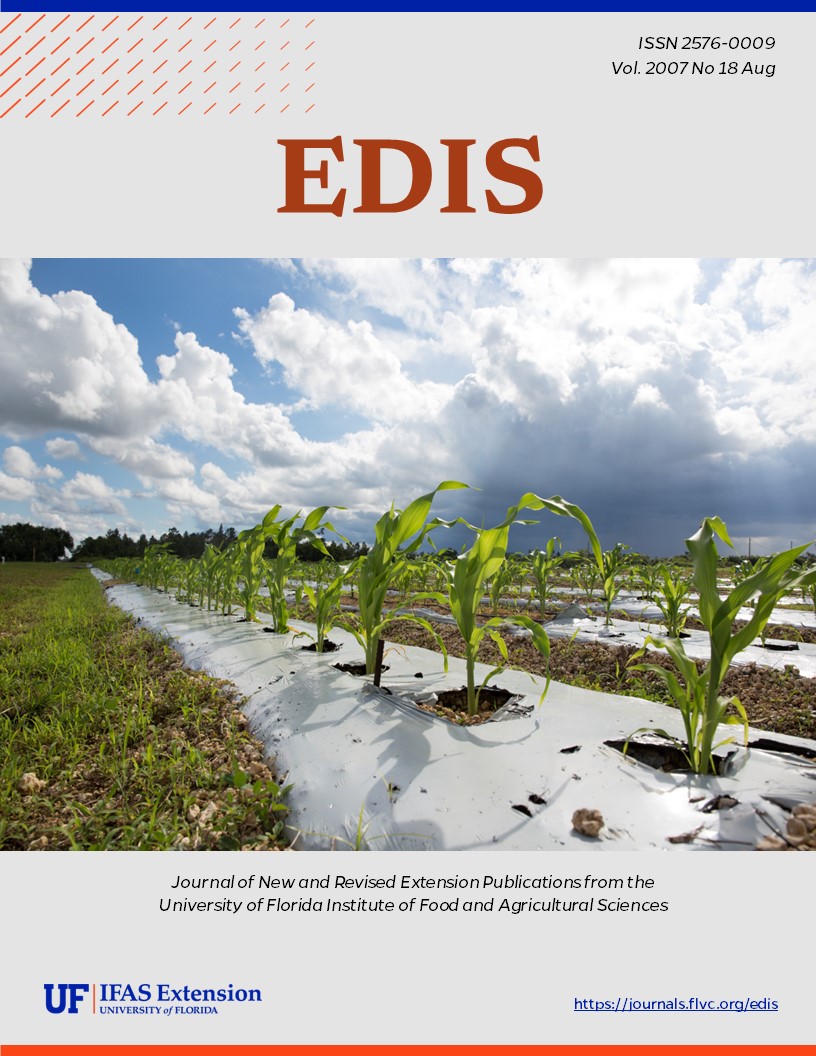Abstract
FE-693, a 5-page illustrated fact sheet by Donna J. Lee, Damian C. Adams, and Frederick J. Rossi, reports results from a 20-year simulation model on the economic impacts of public investment in prevention and eradication of this bio-fouling organism which is expected to reach Florida in the near future, with particular attention to the effect on Lake Okeechobee. Includes references. Published by the UF Department of Food and Resource Economics, August 2007.
References
Adams, D.C. 2007. Economics and Law of Invasive Species Management in Florida. Ph.D. Dissertation, University of Florida, Gainesville, FL (May).
Bossenbroek, J.M., C.E. Kraft, and J.C. Nekola. 2001. Prediction of Long-Distance Dispersal Using Gravity Models: Zebra Mussel Invasion of Inland Lakes. Ecological Applications 11(6):1778-1788. https://doi.org/10.1890/1051-0761(2001)011[1778:POLDDU]2.0.CO;2
Buchan, L.A.J., and D.K. Padilla. 1999. Estimating the Probability of Long-Distance Overland Dispersal of Invading Aquatic Species. Ecological Applications 9(1):245-265. https://doi.org/10.1890/1051-0761(1999)009[0254:ETPOLD]2.0.CO;2
Drake, J.M., and J.M. Bossenbroek. 2004. The Potential Distribution of Zebra Mussels in the United States. BioScience 54(10):931-941. https://doi.org/10.1641/0006-3568(2004)054[0931:TPDOZM]2.0.CO;2
CityplaceHayward, D., and E.D. Estevez. 1997. Suitability of Florida Waters to Invasion by the Zebra Mussel (Dreissena polymorpha). Mote Marine Laboratory Technical Report No. 495, Mote Marine Laboratory, Sarasota, FL.
Johnson, L.E., and J.T. Carlton. 1996. Post-Establishment Spread in Large-Scale Invasions: Dispersal Mechanisms of the Zebra Mussel Dreissena polymorpha. Ecology 77(6):1686-1690. https://doi.org/10.2307/2265774
Ricciardi, A., R. Serrouya, and F.G. Whoriskey. 1994. Aerial Exposure Tolerance of Zebra and Quagga Mussels (Bivalvia: Dreissenidae): Implications for Overland Dispersal. Canadian Journal of Fisheries and Aquatic Sciences 52:470-477. https://doi.org/10.1139/f95-048
Lee, Donna J., Damian C. Adams, and Frederick Rossi. Forthcoming in 2007. Optimal Management of a Potential Invader: The Case of Zebra Mussels in Florida Waterways. Journal of Agricultural and Applied Economics. https://doi.org/10.1017/S1074070800028959
US Army Corps of Engineers (USACE). 1992. Zebra Mussels: Biology, Ecology, and Recommended Control Strategies. Technical Note ZMR-1-01, United States Army Corps of Engineers, Washington, D.C.
US Geological Survey (USGS). 2007. Non-indigenous Aquatic Species Database. Internet site: http://nas.er.usgs.gov (Accessed February 14, 2007).

